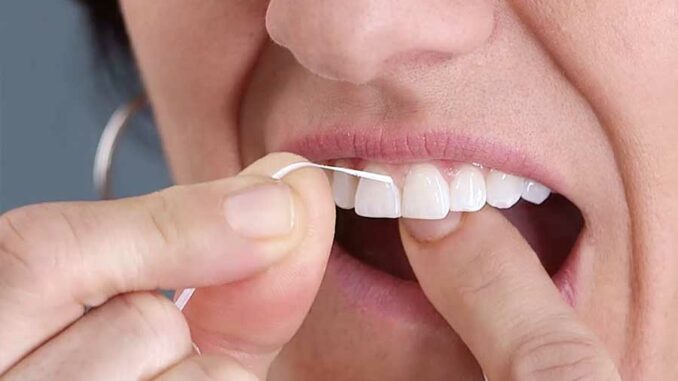
Flossing is a critical component of maintaining good oral hygiene, yet it’s often overlooked or performed incorrectly. Proper flossing removes plaque and food particles from between the teeth and along the gumline, helping to prevent cavities, gum disease, and bad breath. In this extensive guide, we’ll explore the ins and outs of how to floss your teeth correctly to ensure optimal oral health.
The Importance of Flossing
Flossing reaches areas that your toothbrush can’t, such as between the teeth and under the gumline. These are places where plaque tends to accumulate and can lead to dental issues if not removed regularly. By incorporating flossing into your daily oral hygiene routine, you can effectively remove plaque and debris, reduce the risk of cavities and gum disease, and maintain a healthy smile.
Step-by-Step Guide to Proper Flossing
Step 1: Choose the Right Type of Floss
There are various types of dental floss available, including waxed, unwaxed, flavored, and tape floss. Choose the type of floss that feels most comfortable and effective for you. If you have tight spaces between your teeth, consider using waxed floss or dental tape, which slides more easily between teeth.
Step 2: Measure an Adequate Length of Floss
Cut a piece of floss about 18 inches long. This length allows you to use a fresh section of floss for each tooth without reusing the same piece, which can spread bacteria.
Step 3: Hold the Floss Properly
Wrap the ends of the floss around your middle fingers, leaving about one or two inches of floss between your hands. Use your thumbs and forefingers to guide the floss between your teeth.
Step 4: Glide the Floss Between Your Teeth
Gently glide the floss between your teeth using a back-and-forth motion. Be careful not to snap the floss into your gums, as this can cause irritation or injury.
Step 5: Curve the Floss Around Each Tooth
Curve the floss around the base of each tooth, forming a C-shape, and gently slide it up and down along the sides of the tooth. Ensure you reach below the gumline to remove plaque and debris.
Step 6: Use a Fresh Section of Floss for Each Tooth
As you move from one tooth to the next, unwind a clean section of floss from your fingers to ensure you’re using a fresh area of floss for each tooth. This prevents the spread of bacteria and ensures thorough cleaning.
Step 7: Be Gentle but Thorough
Flossing should be gentle yet thorough. Avoid forcing the floss between teeth or snapping it against the gums, as this can cause injury. Take your time to clean between each tooth and along the gumline.
Step 8: Rinse Your Mouth
After flossing, rinse your mouth thoroughly with water to remove any loosened plaque or debris.
Step 9: Dispose of the Used Floss
Once you’ve finished flossing, dispose of the used floss properly. Avoid flushing floss down the toilet, as it can contribute to plumbing problems.
Step 10: Floss Daily
Make flossing a daily habit, ideally before brushing your teeth. Consistent flossing is key to maintaining good oral hygiene and preventing dental issues.
Tips for Effective Flossing
- Take your time: Flossing should not be rushed. Take the time to clean between each tooth thoroughly.
- Be gentle: Use a gentle, back-and-forth motion to avoid injuring your gums.
- Use floss holders or interdental brushes: If you have difficulty using traditional floss, consider using floss holders or interdental brushes, which can make flossing easier and more comfortable.
- Don’t skip flossing: Even if you brush your teeth regularly, flossing is essential for removing plaque and debris from hard-to-reach areas.
Conclusion
Proper flossing is a vital aspect of maintaining good oral health. By following the steps outlined in this guide and making flossing a regular part of your daily oral hygiene routine, you can effectively remove plaque and debris, reduce the risk of cavities and gum disease, and enjoy a healthy, beautiful smile for years to come. Remember, consistency is key—make flossing a habit, and your teeth and gums will thank you.